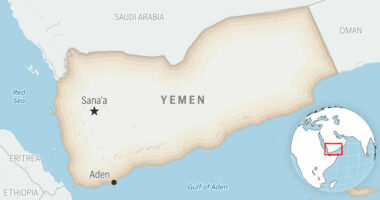Share this @internewscast.com

Wildfires in California’s vineyard regions and Central Oregon intensified overnight, leading to numerous evacuations as firefighters endeavored on Sunday to control the flames amid dry, scorching conditions.
The Pickett Fire in Napa County swelled to over 10 square miles (26 square kilometers) with just 11% containment by early Sunday, as reported by the California Department of Forestry & Fire Protection.
Around 190 residents were ordered to evacuate, and 360 more received evacuation warnings due to the fire threatening approximately 500 buildings near Aetna Springs and Pope Valley, according to Jason Clay, spokesperson for Calfire Sonoma Lake-Napa Unit.
Over 1,230 firefighters, supported by 10 helicopters, were combating the blaze, which ignited on Thursday after a period of intense heat. The fire’s origin remains under investigation.
Residents in the Western U.S. have endured a heatwave that necessitated medical treatment for some, with forecasts predicting precariously high temperatures throughout the weekend in Washington, Oregon, Southern California, Nevada, and Arizona.
Clay mentioned that since the fire began, the weather has slightly calmed, with Sunday’s peak temperature anticipated to be 94 degrees (34 Celsius). However, humidity is expected to decrease, and winds could intensify later in the day.
“That’s been a driving factor in the afternoons since we’ve seen the fire activity pick up for the last three days,” Clay said, adding that “support from all up and down California has been critical to our efforts.”
The fire began in the same area as the much larger Glass Fire in 2020, which crossed into Sonoma County and eventually burned about 105 square miles (272 square kilometers) and more than 1,500 structures.
That fire was driven by wind, while the current fire is fueled by dry vegetation on steep slopes — some of it dead and downed trees left over from the Glass Fire and some of it grass and brush that grew back and then dried out again, said Clay.
In Oregon, the Flat Fire in Deschutes and Jefferson counties had grown to almost 34 square miles (88 square kilometers), with no containment, and threatened nearly 4,000 homes, according to the state Fire Marshal’s Office. About 10,000 people were under some sort of evacuation notice.
The fire began Thursday night and grew quickly amid hot, gusty conditions. Fire officials were keeping an eye on isolated thunderstorms in Southern Oregon that could drift north on Sunday, spokesman Chris Schimmer said in a video posted to Facebook.
Although it’s difficult to directly tie a single fire or weather event directly to climate change, scientists say human-caused warming from burning fossil fuels like coal and gas is causing more intense heat waves and droughts, which in turn set the stage for more destructive wildfires.










